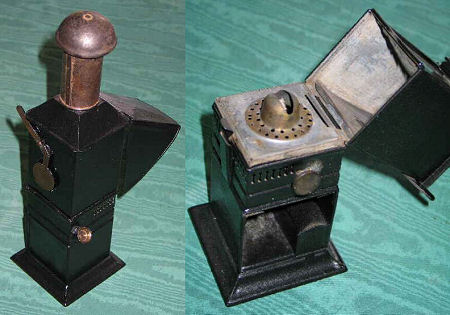|
|
Lecturer's reading lamps.
How the man at the screen could communicate with the man at the magic lantern. |
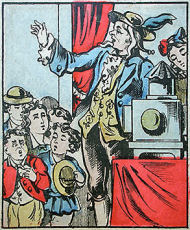 Traditionally, performances with the magic lantern almost always consisted of a
combination of image and sound: the image produced with the magic lantern and
the accompanying sound of the human voice that was used to clarify or make the
images more amusing. The simple, often itinerant, showmen themselves operated
their magic lantern and the accompanying slides and also passed on their own
commentary with stories, interesting facts, jokes and curiosities. Sometimes,
often by an assistant, music was also played with a simple instrument such as a
belly organ or a music box.
Traditionally, performances with the magic lantern almost always consisted of a
combination of image and sound: the image produced with the magic lantern and
the accompanying sound of the human voice that was used to clarify or make the
images more amusing. The simple, often itinerant, showmen themselves operated
their magic lantern and the accompanying slides and also passed on their own
commentary with stories, interesting facts, jokes and curiosities. Sometimes,
often by an assistant, music was also played with a simple instrument such as a
belly organ or a music box.Around the second half of the 19th century, the performances took on a different character. The 'lectures' were increasingly given in large halls, for associations and institutes. There was a clear division of tasks. The man who presented the performance was sometimes an amateur, but increasingly a professional, dressed in a smart suit. His main task was to provide text and explanations for the displayed images. He stood beside the screen, facing the audience, while the lanternist at the far end of the room operated the lantern and changed the slides. There was a need for good communication between the explicator and the lanternist. To prevent the explicator from repeatedly shouting the 'next slide please', which was very disturbing to the audience, all kinds of ways were sought to make it clear to the lanternist in a different way that the slide had to be changed, such as a small ping of a bell or the click of a metal clicker hidden in the speaker's hand, but of course these solutions still produced a disturbing sound. |
|||
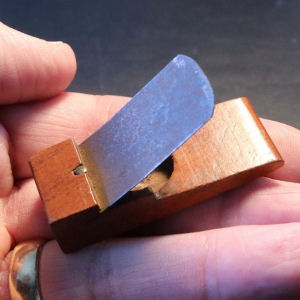 |
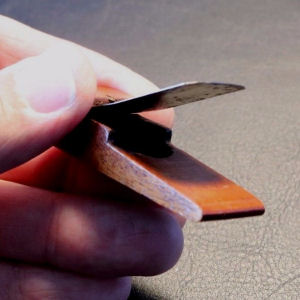 |
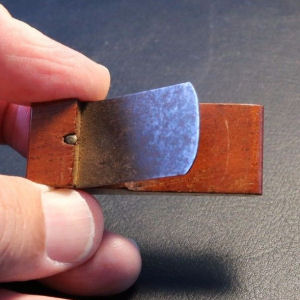 |
|
|
Slide change clicker. Perhaps the most simple
appliance for signalling that it's time to change the slide. You have to
click it in one direction, then the other; it doesn't return to the starting
point automatically. |
|||
| A better way of communicating was found in the electrical signal equipment for readings, which was manufactured by Primus, among others. | |||
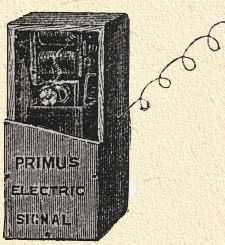
|
Lecturer's electric signal. Stand-alone device, used to allow communication between the lantern lecturer, often working close to the screen, and the operator, working at the other end of the hall. It consists of a wooden box containing a metal reel with a long length of electrical cord, an electric battery and a small lamp. When the lecturer pushes the button at the end of the cord, the lamp inside the box flashes, giving the operator the sign to change the slide. After the show the cord was wound back into the box by means of a removable crank. |
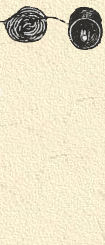
|
| The main improvements to a speaker's equipment was the lecturer's lamp. The first reading lamp was made by E.G. Wood and his son, but after that they were also made by many other manufacturers, in all kinds of versions. They were often made of japanned tin or Russian iron and lit by a candle, paraffin or vegetable oil. The simplest copies were only intended to shed some light on the speaker's book or papers. Usually they had a hinged metal hood that could be moved up and down. This focused the light on the text of the speaker and prevented the light from being spread in the hall. The more elaborate lanterns were equipped with a second light behind a red coloured glass with which a silent signal could be given to the operator by means of a lever. Some were also equipped with a bell. Sometimes the lamp was mounted on a reading stand. | ||
 |
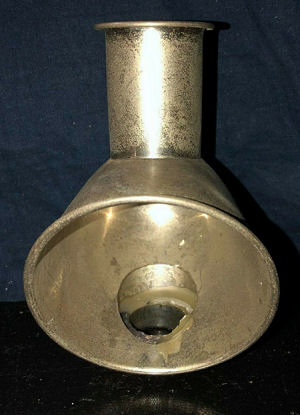 |
During the performance, this
metal shade was placed on top of a candlestick
with a candle, so that the light of the candle was thrown onto the table and the lanternist could still read the texts to be recited in the dark.
It couldn't have been simpler. This particularly simple reading lamp has no signalling function.
|
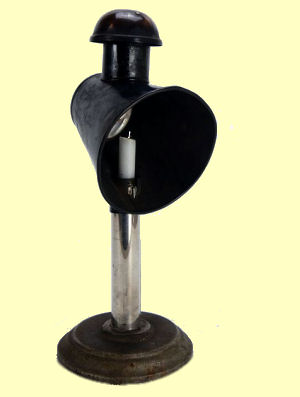 |
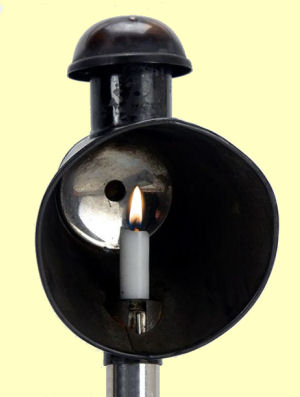 |
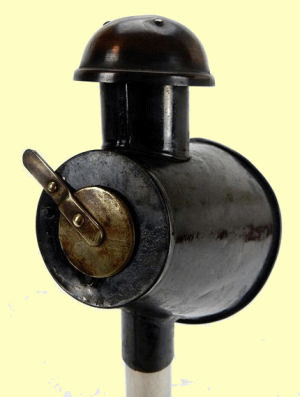 |
|
This reading lamp was also used by
the storyteller during a magic lantern performance when reading the texts in the
dark, but he could also shift a lever on the back and thereby signal the lanternist to show the next slide. |
||
|
Magic lantern lecturer's oil lamp. A lecturer's reading/signalling oil lamp from around 1890-1900. The lamp operates on paraffin oil and will burn for maybe an hour or so on a filling. In one of the walls is a red lens, concealed by a shutter, which can be exposed by raising a brass handle so that the projectionist can see when to put up the next slide. The lecturer's papers are illuminated by a shaded light from the lamp. The lamp is 12" (30.5 cm) tall. The lamp is made of tin plate and has a hinged shade which directs the light downward. There is a glass to keep the flame away from the papers. |
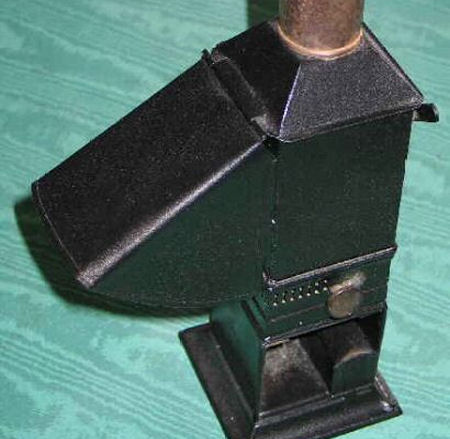
|
|
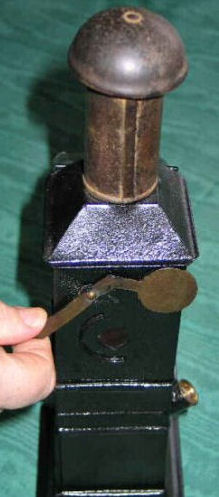 |
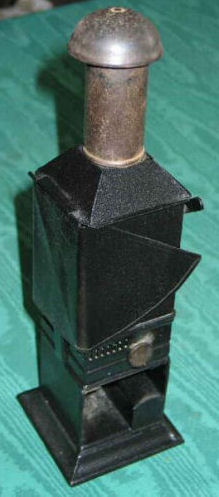 |
|
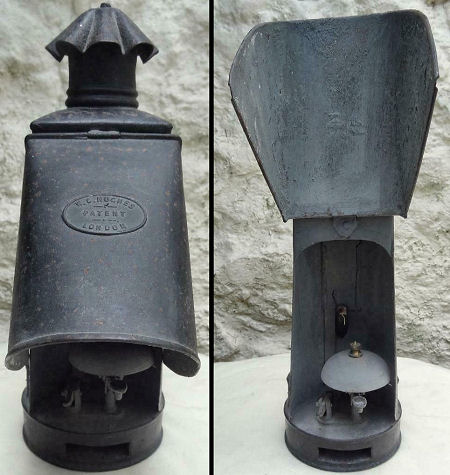 |
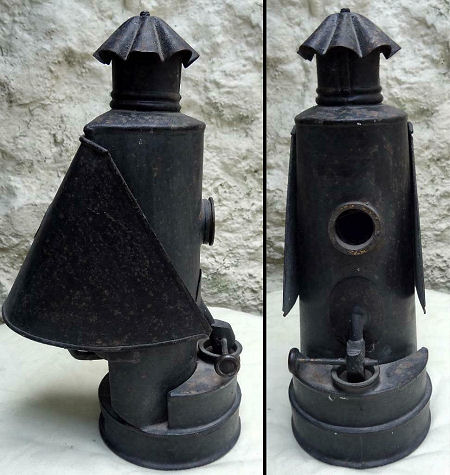 |
|
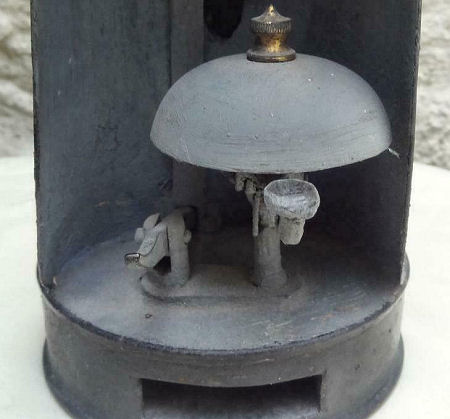 |
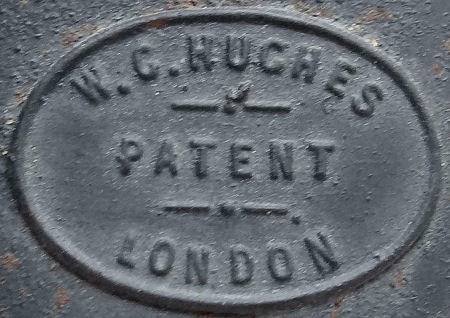 Signal lamp made by W.G. Hughes, Londen. The lanternist could be warned by the bell or by briefly removing the red lens cover. Height 26 cm. |
|
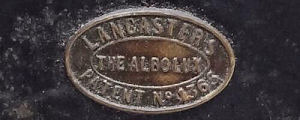 |
The reading and signal lamp below is the model The Albolux, patent No. 1365, made by Lancaster with a bell and a flasher operated by means of a handle with which a signal could be given to the lanternist. The lamp is 27 cm high. | |
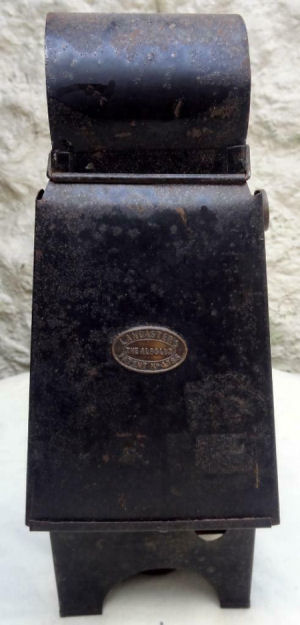 |
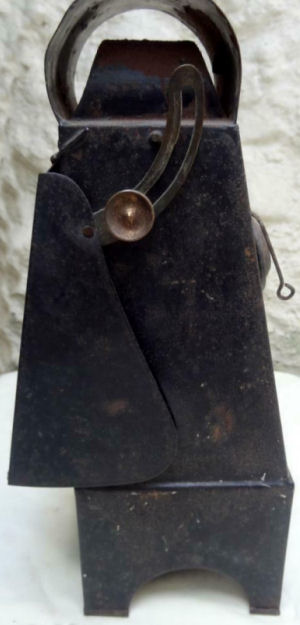 |
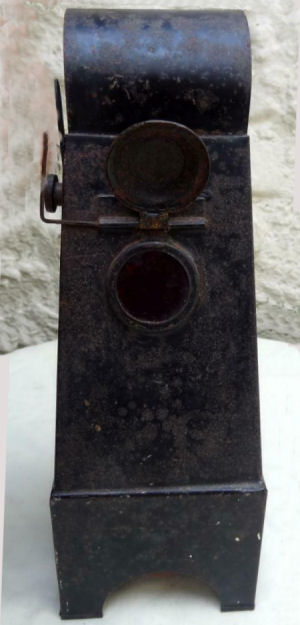 |
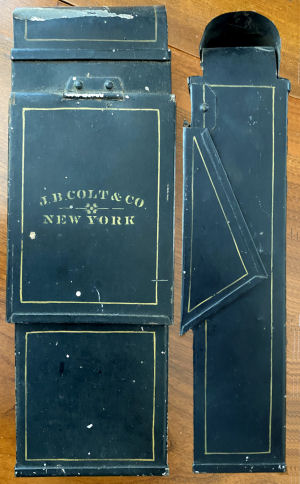 |
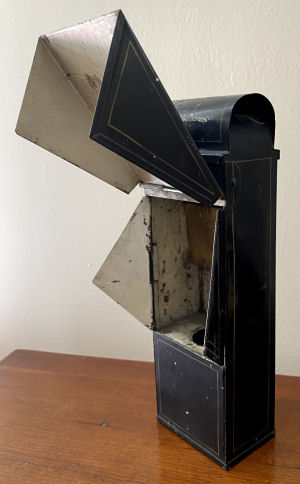 |
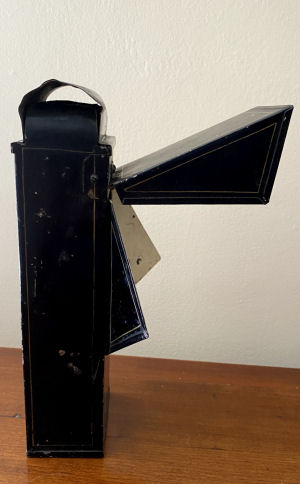 |
|
This reading lamp from
the American manufacturer J.B. Colt & Cois remarkably narrow. The black painted
lamp is decorated with golden lines. Dimensions approximately 23 x 7.6 x 5 cm. |
||
| Some other reading and signal lamps. | ||
 |
 |
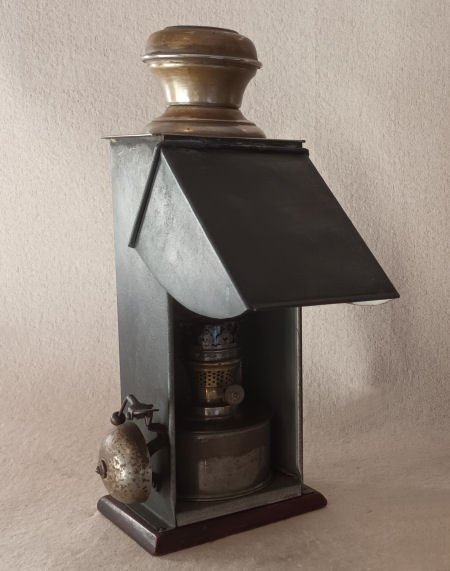 |
|
|
|
| |
©1997-2022 'de Luikerwaal' All rights reserved. Last update: 30-09-2022. |
|
